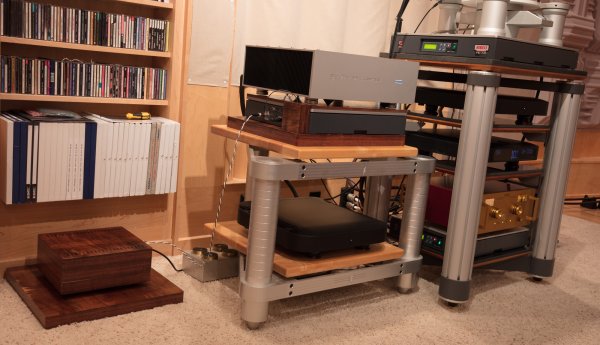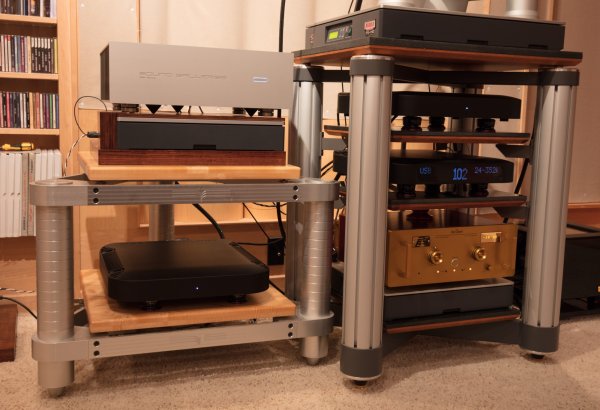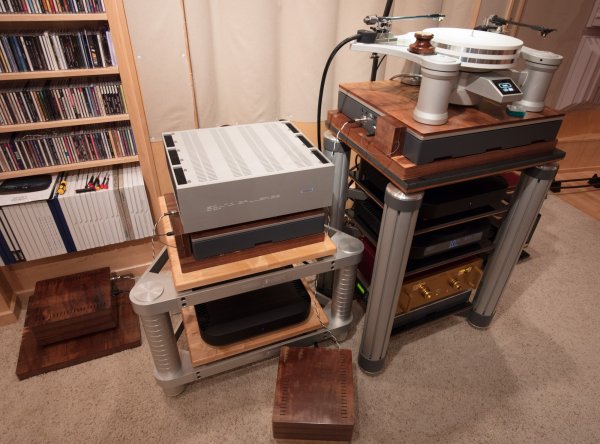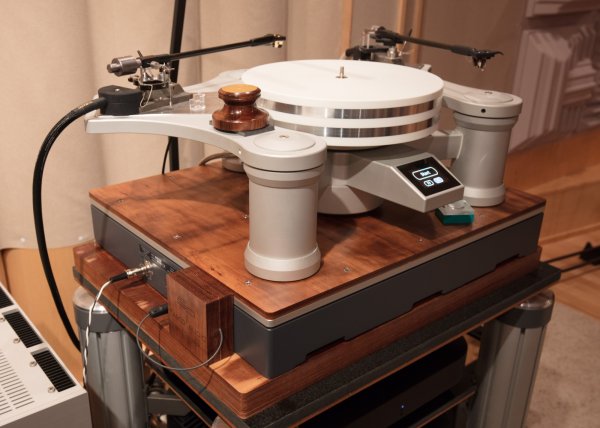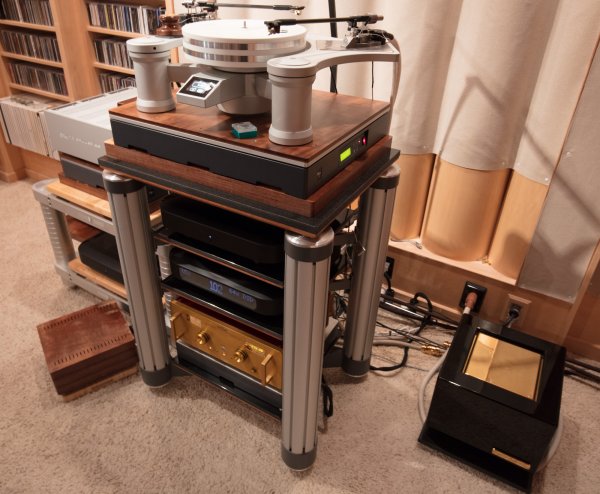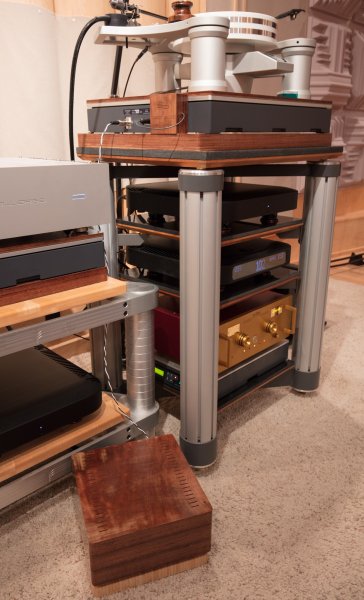i'm going to allow Ed or Emile from Taiko Tana to comment on their findings regarding your perspective about cause and effect. I don't want to mess up the explanation. they have an AVI unit in house and pursuant to my concerns have inspected the power supply. and obviously I have 2 stock Herzan's; a TS-150 and TS-140, and 2 Taiko Tana TS-140 & 150 units here to compare. i'm not disputing in any way what you are hearing. the issue is the root cause of why active mode in your NDW23 is not resulting in the performance boost under the AS-2000 that i'm hearing here. and I can tell you i'm definitely hearing exactly a raw realism boost in active mode for both my SGM server and NVS turntable.
Continuing the story, we first brought the AVI 200 with great enthusiasm about a year ago, and tried to get it to perform well for several pieces of digital gear on a Panzerholz rack built around the AVI's. We were not very successful for a number of reasons which we believe to be the following
- the coupling of the AVI to the base, and the vibration characteristics of the base are very influential in audio applications
- coupling of the AVI to the top supporting plate is likewise extremely important for audio
- we later learnt that the quality of the LPS in terms of ripple, isolation and vibration control is very influential
- its really important to avoid complex feedback and resonance of medium and high frequencies between the various structures and components
We believe the design and implementation of the Tana package is successful for the following reasons
- The cast aluminium chassis of the TS series provides a rigid, stable, and problematic resonance free base for the transducers
- Having the the table sit on 40 mm of Panzerholz significantly attenuates the amount of MF and HF feeding from the floor to into the table and its motion sensors and improves their low frequency performance and the "quality" of the anti-vibration signal going to the transducers
- the sandwich construction of steel under plate, 10 mm aluminium and then 10 mm Panzerholz damping of the table's top plate for MF and HF vibrations works well
- The effectiveness of the power supply from the point of view of low ripple, fast response, RF isolation, and vibration control
After reviewing the AVI units, the workstation support table, and the AVI power supply, we think it's pretty difficult to come up with a package built around those pieces that could equal or surpass the performance of a right sized TS package



